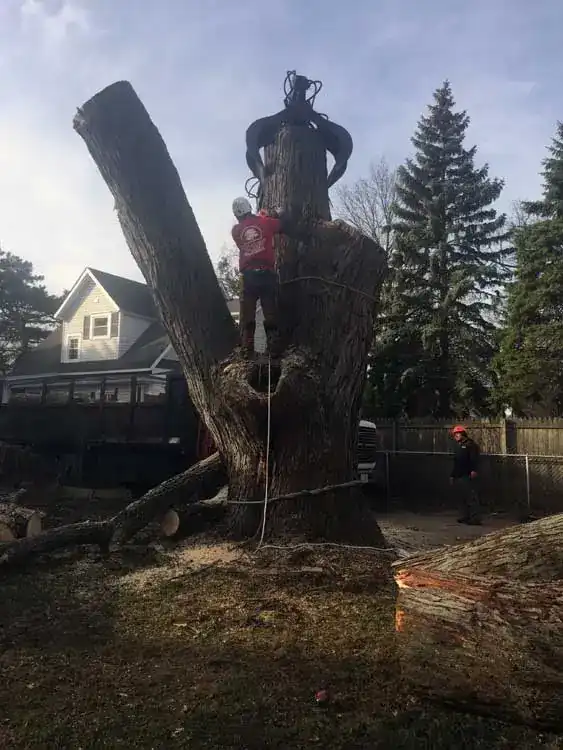
Stump removal is not a simple task. If it were a simple task, you would not see tree stumps firmly rooted in your neighbor’s front yards. Many factors contribute to why a tree must be removed, such as the health, placement of the tree, overall appearance of the tree. What many people do not realize is that the actual removal of the tree itself is a very straight forward process and is not as technical as stump removal.
Tree Stump Removal
After cutting the tree down it is often decided to leave the stump and come back to it later. Cutting down a tree yourself can be a very time consuming and labor intensive process, to the point that when it comes to the stump you may decide to just leave it alone and come back to it next week, next month, or even next year. This may seem like a good idea at the time, but there are many factors that can make this “good idea at the time” decision a daunting one.
When a tree stump remains for an extended period of time the tree will have the potential to re-sprout in multiple places around the edge of the stump or from the roots. Depending on whether the tree was being removed as a permanent decision or if it is expected to recover, this can be either desirable or undesirable result. In addition to potential re-sprouting, stumps also provide a few other potential issues, such as creating safety hazards, becoming redundant eye sores, and taking up valuable space within the property.
Safety Hazards
When cutting down the tree it is common to leave the stump raised to eye level. While this is the less desirable option, it is often the most recommended one. When the stump is able to be seen it reduces the possibility to become a tripping hazard and can also prolong the life of the blades on your lawn mower. The other option is to cut the stump down to become flesh with the soil and grass. In these instances, the stumps create instant tripping hazards and may become responsible for damages to lawn mowers and other lawn care equipment.
Tree Stumps Are Ugly
An ideal yard has lush, green grass, and tall, sturdy trees. When thinking of your dream yard the last thing that comes to mind is a lonely old tree stump. As mentioned earlier, stumps also have the potential to re-sprout, which will not only lead to further maintenance of an already unwanted tree, but also cause it to become even more unwantedly noticeable.
Tree Stumps Take Valuable Space
In addition to being an eye-sore, stumps also take up residency in your yard. They can instantly create additional obstacles and work when it comes to maintaining your lawn. If the stumps was removed in the first place, lawn mowing would be one simple task, but since there is still part of a tree remaining, you also have to pull out the Weed Wacker, and in the hot mid-western summers, who wants to do that?
Tree Stump Removal Techniques
Some stumps are easier to remove than others and therefore different techniques may be applied. One thing to keep in mind with any of these methods is that they can potentially be costly, 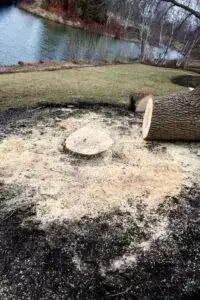 ineffective, and time consuming. It all really comes down to the tree roots. If you decide to remove the stump immediately after tree removal, the process will be much more complex and time consuming. If you don’t mind a stump sitting in your yard for a few seasons, then it will be easier to remove yourself. Generally, the age and size of the tree are the best indicators of stump removal difficulty. For example: the older a stump is, the easier it is to remove, while small stumps are also easier to remove than large ones. Some significant factors that contribute to the amount of difficulty of stump removal include the age of the tree, the health of the tree, and the type of tree. For example: a younger, sickly tree will have a less sturdy and stable root system compared to a giant, 100 year-old healthy oak tree. The roots of pine trees tend to be wide, flat and relatively shallow while deciduous tree stumps’ roots tend to be long and deep. Before deciding to remove a stump yourself, you must weigh all of these factors before deciding which removal method will be most successful.
ineffective, and time consuming. It all really comes down to the tree roots. If you decide to remove the stump immediately after tree removal, the process will be much more complex and time consuming. If you don’t mind a stump sitting in your yard for a few seasons, then it will be easier to remove yourself. Generally, the age and size of the tree are the best indicators of stump removal difficulty. For example: the older a stump is, the easier it is to remove, while small stumps are also easier to remove than large ones. Some significant factors that contribute to the amount of difficulty of stump removal include the age of the tree, the health of the tree, and the type of tree. For example: a younger, sickly tree will have a less sturdy and stable root system compared to a giant, 100 year-old healthy oak tree. The roots of pine trees tend to be wide, flat and relatively shallow while deciduous tree stumps’ roots tend to be long and deep. Before deciding to remove a stump yourself, you must weigh all of these factors before deciding which removal method will be most successful.
Methods of Stump Removal:
Burning – This is often one of the more simple methods for stump removal that does not require much time to elapse, but it is also one of the more risky methods due to potential ignition of nearby objects and debris. When stump burning is performed close supervision is a necessity. This method is carried out by drilling multiple holes into the stump (about 8 to 10 inches deep) about 1 inch apart from each other. After clearing out all debris from the holes (which must be done properly to ensure proper funneling of product), potassium nitrate is then placed into each hole followed by the addition of hot water. Once the potassium nitrate is dissolved it is then ignited. Once the fire has distinguished itself the stump is then completely dug up and the now existing hole is filled with soil. One thing to keep in mind about this process is that while the stump will be affected by the burning, surrounding close-to-surface root systems may not. As mentioned earlier, this leaves room for re-sprouting within the root system.
Chemical Removal – This method first requires that the stump is trimmed to be as small as possible. Once trimmed, several holes are drilled into the stump (about 10 to 12 inches deep) and the chemical stump remover is poured into the holes. After 4 to 6 weeks the stump will become soft and spongy, which will aid in the hatching and removal of the stump. Again, this method can leave close by root systems unaffected.
By Hand – This method often requires the most labor. Multiple tools may be needed such as a chainsaw, hatchet or axe, rope, shovels, and in some cases a vehicle. The process begins by first trimming the trunk to where only enough for leverage remains. Followed by using the shovel to dig out as much of the stump as possible and reveal underlying roots. The roots are then hacked away and dug out, followed by the attempt of moving and wedging the trunk out of place. In more complicated scenarios it is recommended to chain the stump to a 4-wheel drive vehicle in attempt to budge it out of place. This is a very labor intense and time consuming method. It is also often ineffective due to exposed root systems and little or no chemical intervention.
Stump Grinder: A stump grinder is a power tool that removes tree sumps by a rotating cutting disk that chips away at the base of the stump. Stump Grinders are the most recommended and effective way of removing a stump since they can completely destroy the roots of the trees in just a few seconds. The downside to Stump Grinders is the fact that they are very expensive and may be the size of a small tractor. Smaller Stump Grinders are available, but they are often unable to remove larger stumps successfully. Stump Grinders are available to rent for a decent price, but if you do not have experience using a stump grinder it may quickly go from a good idea to a complicated mission. When deciding to use a Stump Grinder it is highly recommended to have a professional come in to complete the job, such as Progressive Tree Service.
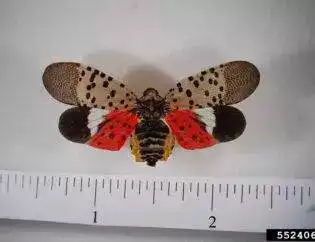
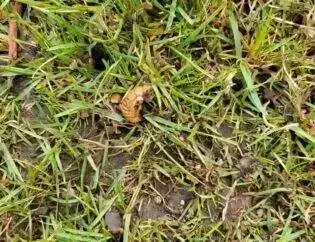
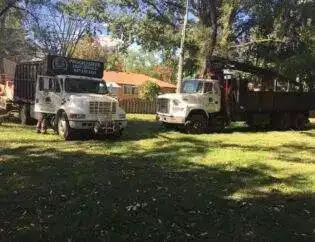
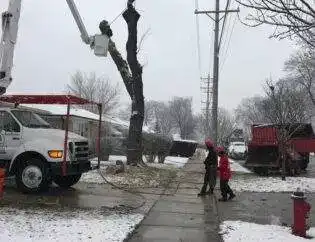
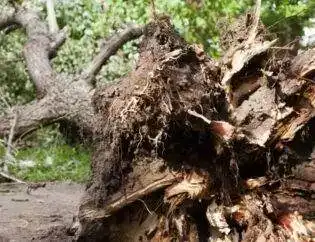
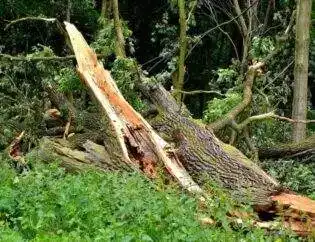

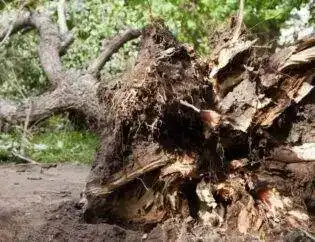


You must be logged in to post a comment.